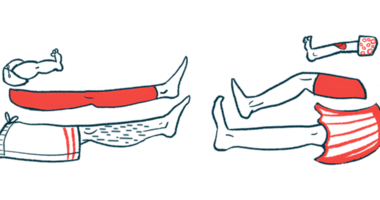After Hip Fracture, More Parkinson’s Patients Need Higher-level Care
Study finds lack of patient screening and preventive treatment for osteoporosis

More people with Parkinson’s disease tend to require higher-level care after experiencing a hip fracture, compared to those who do not have the disease, a study has found.
Despite Parkinson’s being a risk factor for hip fracture, most patients do not undergo proper screening or preventive treatment for osteoporosis.
“[F]uture efforts should focus on optimizing and facilitating bone health screening and follow-up, as well as post-injury care coordination and multidisciplinary involvement, for [Parkinson’s] patients,” researchers wrote.
Results were detailed in the study “Hip Fracture Care in Parkinson Disease: A Retrospective Analysis of 1,239 Patients,” published in the journal Geriatric Orthopaedic Surgery & Rehabilitation.
Parkinson’s patients are susceptible to recurrent falls. The disease has also been linked to lower bone mineral density and osteoporosis (fragile bones), increasing the risk of bone fractures, particularly those of the hip.
Despite this, Parkinson’s patients may experience poorer bone care compared to other patients, according to recent studies. Additionally, although algorithms to guide the management of bone health and fracture risk in Parkinson’s have been developed, few recommendations and preventive measures have been implemented.
In the new retrospective study, a team of researchers compared the characteristics and outcomes of hip fractures between people with Parkinson’s and those who did not have the disease, with the goal of improving patient care.
The study included 1,239 patients from a registry that tracked all hip fracture-related hospitalizations in six hospitals in the U.S. between July 1, 2017 and June 30, 2019. Of these, 49 people had been diagnosed with Parkinson’s.
Variables assessed between the two groups included injury and treatment features, as well as Charlson Comorbidity Index (CCI), which is used to predict the risk of death within one year of hospitalization in patients with other health conditions. Outcomes obtained from the registry included complications, readmissions, and mortality.
Results revealed that Parkinson’s patients had a slightly higher CCI compared to non-Parkinson’s patients (2.3 vs. 1.7), as well as a higher prevalence of dementia (42.9% vs. 26.7%).
Nearly all Parkinson’s patients (98.0%) were discharged to higher level care compared to patients without Parkinson’s (83.1%). More Parkinson’s patients (65.3%) were discharged to a skilled nursing facility than non-Parkinson’s patients (48.2%).
“It is possible that discharge to higher care level facilities with higher degrees of multidisciplinary care can help [Parkinson’s] hip fracture patients achieve non-inferior outcomes compared to patients without [Parkinson’s],” the researchers wrote.
Given that this care involves more resources and, consequently, high costs, “it may be worthwhile to focus future efforts on optimizing and/or incentivizing discharge and care coordination for these patients to higher level care facilities,” the researchers added.
A prior diagnosis of osteoporosis was found in 4.1% of those with Parkinson’s and in 6.2% of those without the disease. However, 22.4% of Parkinson’s patients and 33.4% of non-Parkinson’s patients were on osteoporotic medications at the time of admission, which “strongly suggest under-screening” of osteoporosis among Parkinson’s patients, the researchers noted.
In addition, a low percentage of Parkinson’s patients (16.3%) received a referral for bone health evaluation and/or follow-up after discharge. These findings “highlight the opportunity to improve osteoporosis care coordination and bone health screening for patients with [Parkinson’s],” the researchers wrote.
The study found no differences between the groups, up to one year, in in-house complication rates or types of complications, hospital readmissions, or in-hospital mortality.
“Although hip fracture outcomes between [Parkinson’s] and non-[Parkinson’s] patients were similar, differences between the groups were identified,” the researchers concluded. “These differences could inform best practices for prevention and treatment of hip fractures in [Parkinson’s] patients.”








